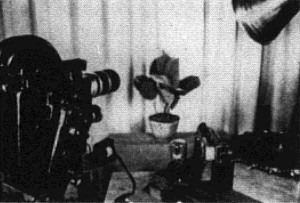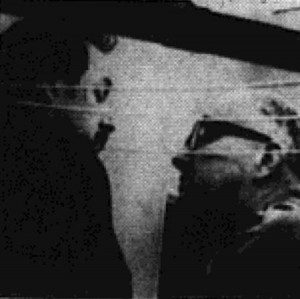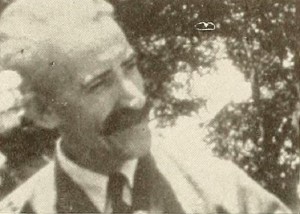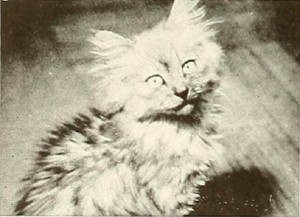
"We remember Jack's Prelude to Spring a few years ago in which he dealt with time lapse photography. In Floral Capers he introduces the equipment he uses in time lapse photography and how he does it in one easy lesson. We watch flowers go through the opening cycle, vines racing up a pole, grasses, plants, and flowers racing ahead in their growth, split frame emphasizes the stimulation of light on the growth of plants. We watch many interesting events in the life of plants, and some amusing ones" PSA Journal, Nov. 1960, 40.
"A short amateur film using time-lapse photography of flowers blooming in a studio setting." Library and Archives Canada.
"Florida, a documentary film of that state, made in Kodacolor by H. W. Voss, ACL, has been given Honorable Mention because of the freshness and charm of its component subject matter. Replete with human interest material, such as sequences of wild turkeys, new born calves and clumsy, appealing puppies, the picture is a bright and amazing mine of simple entertainment. Though Mr. Voss slips occasionally from a uniformly high technical standard of color work, he need bow to no one in the warmth and charm which he finds and records everywhere in the life about him." Movie Maker, Dec. 1934, 546.
"Choosing one of the most common sites of seasonal move making, Benjamin Crocker has by the sheer virtuosity of his production methods come up with an attractive and entertaining travel short. Here are, to be sure, Marineland, Miami, Silver Springs, Cypress Gardens and all the rest, tied neatly together with an animated map and a lively commentary. But with his clean camera work, fresh viewpoints and incisive editing, Mr. Crocker covers them in a tight ten minutes of unflagging good fun. To these same subject other amateurs have devoted twenty, forty or even-sixty minutes, and, all too often, have encountered the inevitable law of diminishing returns, Florida Vacation Fun dances where others have dawdled" PSA Journal, Jan. 1955, 48.

"Isabelle's next door neighbors - three bachelors - are asked to carry on for her, when she is stricken and hospitalized, in entering her prize orchid in the Garden Show. Their well-meaning but bumbling attempt to help her win the prize results in hilarious antics and a heart-warming conclusion to this delightful comedy" PSA Journal, Oct. 1963, 41.

"Flowering Byways, presented with well chosen musical accompaniment, is a story of the creation and growth of a home garden, cleverly interwoven with the thread of human interest. In it, Ernest Kremer has made a thoroughly enjoyable and interesting record of his father in law's gardening ability. "Pop's garden" has its beginnings in the chilly days of early spring, when the bare ground gives little promise of the profusion of bloom that is to spring up under Pop's skillful hands. We follow with keen interest the growth of the garden through subsequent months. Mr. Kremer's skill in presentation being demonstrated by the constant variety of material and by the interpolation of well chosen touches of human interest. Finally, the apotheosis of Pop's garden creation is realized when he takes first prize at the local garden club show. The flower closeups here are always excellent, but they are not made an end in themselves." Movie Makers, Dec. 1941, 565.
"Amateur film that premiered at the press conference announcing Kodak’s introduction of 16mm." filmpreservation.org

"In Fluffy, the Kitten, a kitten tells her own story about herself — the things that she likes to do, the way she spends her day, the things she eats and the way in which her mistress takes care of her, to make her a happy companion. In designing and filming this continuity, Grayce and Kenneth Space have created the most natural and expressive movie of a pet that we have yet seen. Interpreted with titles, written in the first person, as if the kitten were speaking, this film presents interior lighting and camera work without blemish. The cutting is masterly, and the whole unit is as smooth as Fluffy's silky fur. The intention of the filmer was to create a new, direct and simple type of teaching film that would convey its message efficiently and entertainingly to children. This purpose was completely achieved; you cannot look at Fluffy, the Kitten without learning important things about cats and you cannot look at it without being delighted. Most amazing of all qualities in this film is the uncanny success of the producers in controlling the kitten actor. Fluffy appears to play each scene like a trouper. Unlimited patience and extraordinary skill were involved in making this picture. Movie Makers, Dec. 1940, 577, 599.
"Romantic narrative by Rochester homemaker Marion Gleason that was used by Kodak to introduce home-moviemaking to the public." filmpreservation.org
Total Pages: 299